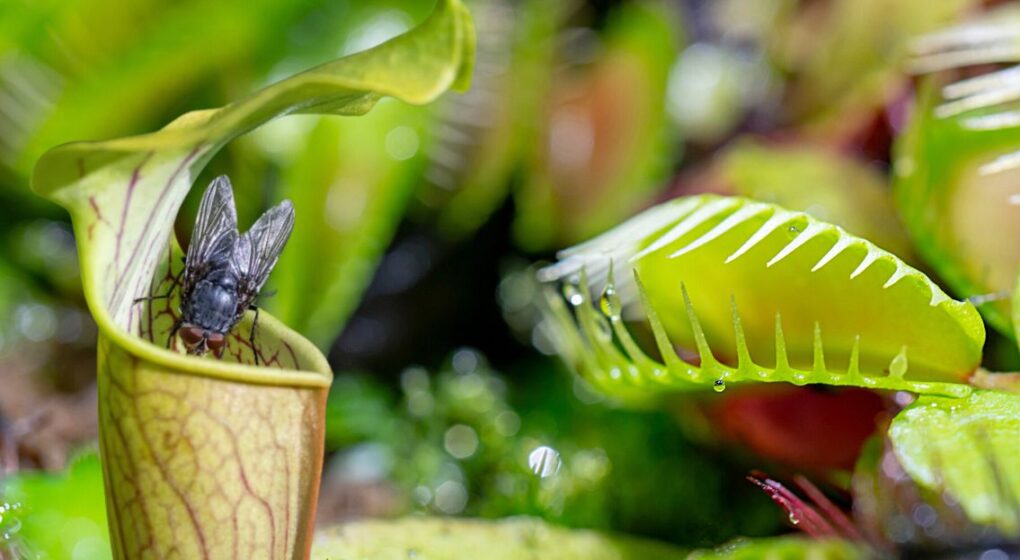
Why Do Carnivorous Plants Eat Insects?
Carnivorous plants have adapted to grow in nutrient-poor environments, such as bogs and swamps, where the soil lacks the necessary nutrients for growth. To survive, these plants have adapted to obtain nutrients from insects and other small organisms.
The leaves of carnivorous plants are modified to act as traps, which capture and digest their prey. Some species of carnivorous plants use sticky mucilage to trap insects, while others use pitcher-like structures filled with digestive enzymes.
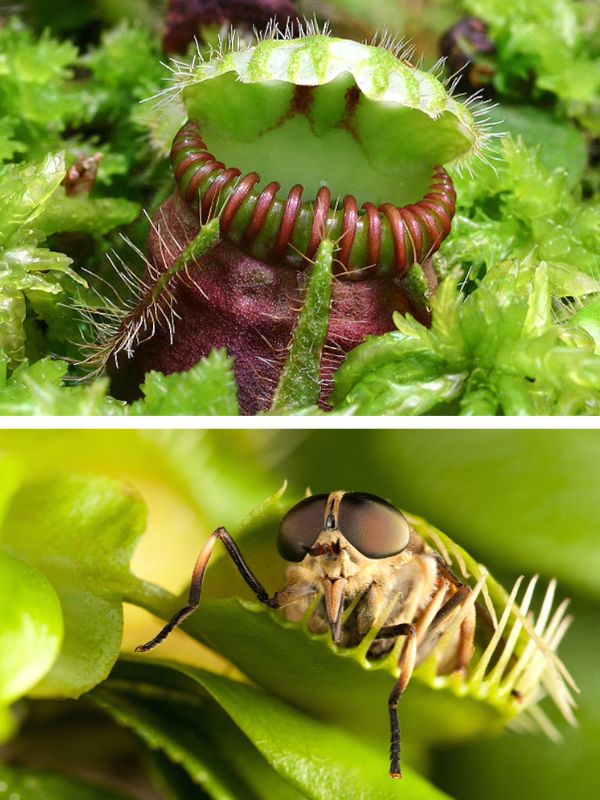
Cephalotus (top), Dionaea (bottom)
Insects provide a rich source of nitrogen, phosphorus, and other important nutrients that carnivorous plants require for growth and reproduction.
Interestingly, not all carnivorous plants feed exclusively on insects. Some species have been known to capture and digest small animals, such as frogs and rodents, while others supplement their diet with nutrients from decaying plant matter.
Sarracenia (Trumpet Pitcher Plants)
Sarracenia, also known as the trumpet pitcher plants, are a unique group of carnivorous plants found in North America. They are known for their distinctive trumpet-shaped leaves that are designed to trap and digest insects.
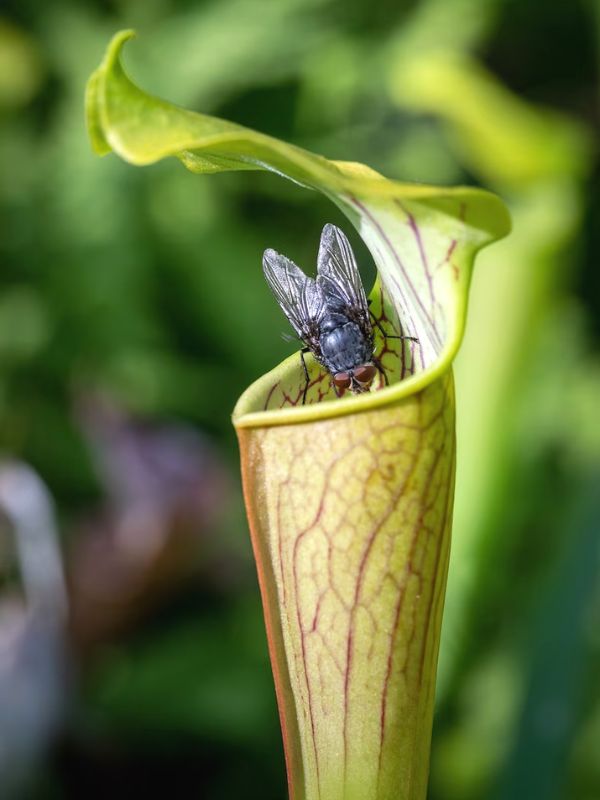
A Trumpet Pitcher plant ensnaring a fly
Unlike other carnivorous plants that use sticky leaves or snap traps, Sarracenia uses a combination of attractive colors and enticing nectar to lure insects into their traps. Once the insects enter the trumpet-shaped leaves, they become trapped and are slowly digested by enzymes produced by the plant.
Sarracenia comes in a variety of shapes and colors, ranging from tall and slender to short and wide. They also have a wide range of colors, including green, yellow, red, and even purple. Some species even have intricate patterns on their leaves, making them a beautiful addition to any plant collection.
Heliamphora (Marsh or Sun Pitcher)
Marsh Pitcher Plants are classified as a subgroup of Sarracenia (the trumpet pitchers). They can be found growing naturally in Venezuela and Guyana.
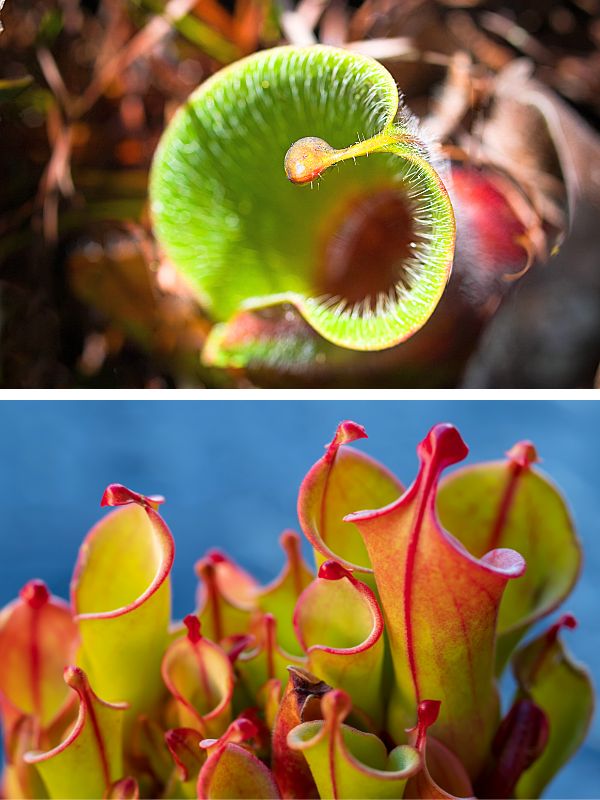
Heliamphora, Sun Pitcher plant close-up
One distinctive feature of the Marsh Pitcher is their nectar spoon in place of having a lid on top like other pitcher plants. The underside of the ‘spoon’ secretes nectar that attracts insects. Once insects have had their fill, some will inevitably fall into the pitcher and become plant fertilizer.
Another unique feature is a small slit about halfway up the pitcher that allows the plant to drain excess rain water which can end up diluting the digestive enzymes. The slits also contain cross-hairs that keep prey from flowing out when it rains.
The flowers are white to cream colored and resemble a cross between a helleborus and a lily. They are quite striking when in bloom.
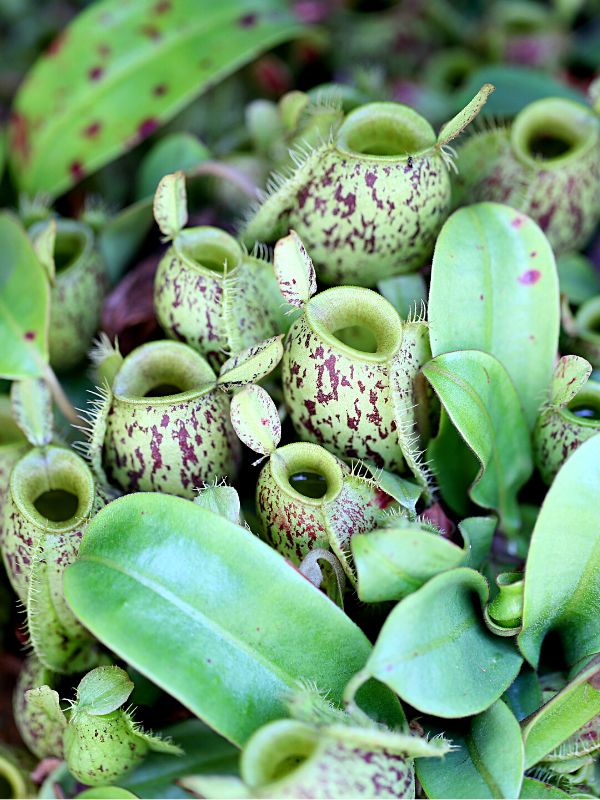
Heliamphora minor
Heliamphora minor is a dwarf sun pitcher with amazing red, green, and even purple coloring. Often staying under 3 inches tall, Sun pitchers will quickly form a wide clump of pitchers that can easily fill a large pot.
Cephalotus: The Australian Pitcher Plant
Cephalotus is a small genus of carnivorous plants native to the southwest corner of Western Australia. The plant is commonly known as the Australian pitcher plant, Western Australian pitcher plant, or Albany pitcher plant. It is named after the Greek word “kephale,” which translates to “head,” due to the shape of its pitcher.
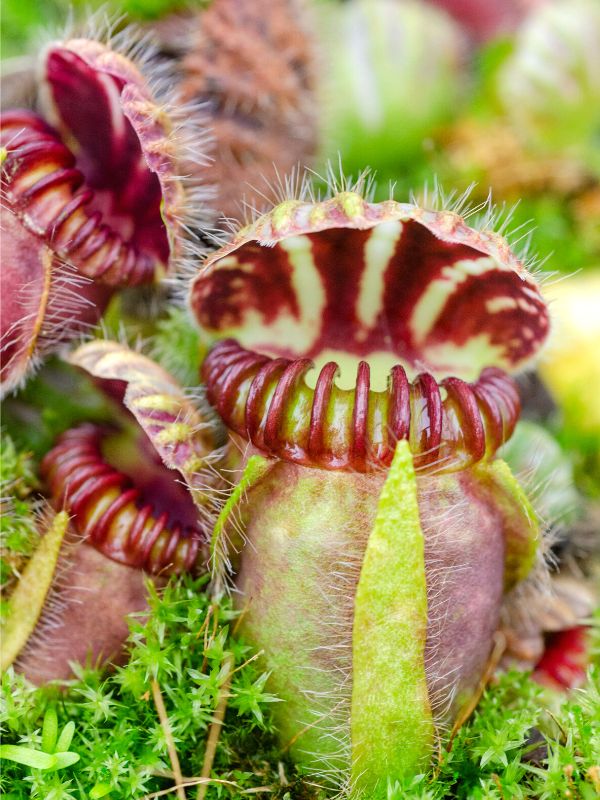
Cephalotus, the Australian Pitcher Plant
The Cephalotus plant is unique in its appearance, with small rosettes of leaves that grow close to the ground. Each rosette produces a single pitcher, which is shaped like a bulbous head with a small opening at the top. The plant’s pitchers are designed to trap and digest insects, which provide the plant with necessary nutrients.
The Cephalotus plant prefers damp and shady conditions, and can often be found growing in bogs, swamps, and near streams. It requires a nutrient-poor soil, as it obtains its nutrients from the insects it captures.
Venus Fly Trap (Dionaea muscipula)
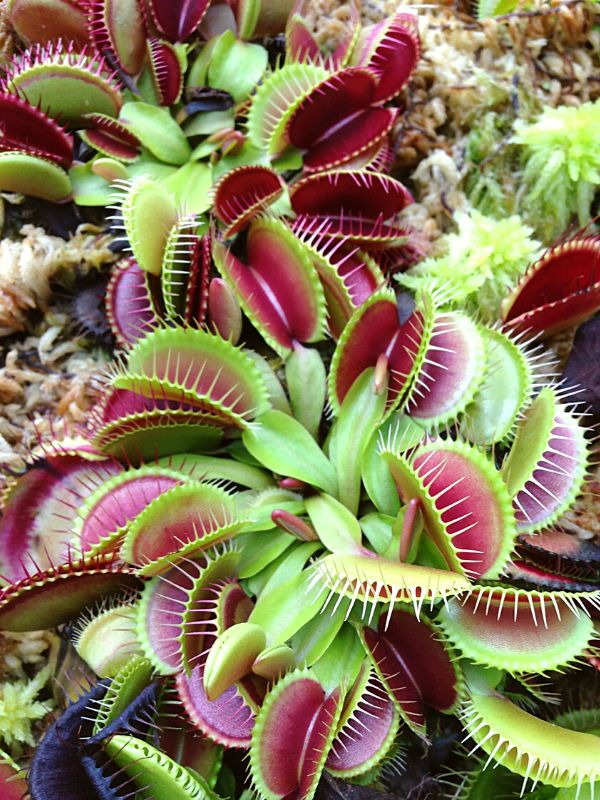
The Venus Fly Trap
The Venus Fly Trap, also known as Dionaea, is a carnivorous plant that is native to the wetlands of the southeastern United States. This unique plant is known for its ability to capture insects with its modified leaves, which have sharp teeth-like structures on the edges.
The Venus Fly Trap uses a unique mechanism to capture its prey. When an insect lands on the surface of the leaf, it triggers tiny hairs called trichomes located on the leaf’s surface. This causes the leaf to snap shut, trapping the insect inside. The plant then secretes enzymes that dissolve the insect’s body, which the plant absorbs as a source of nutrients.
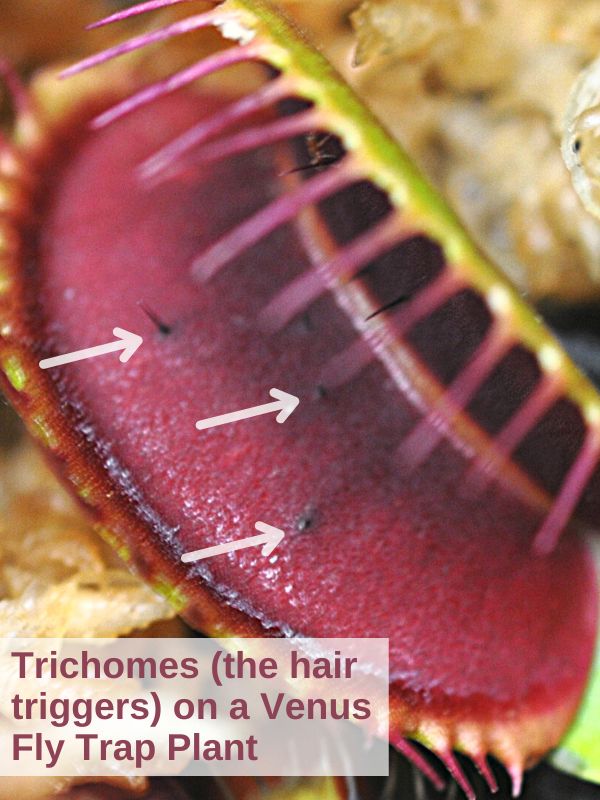
Trichomes on a Venus Fly Trap
Drosera (Sundew Plants)
The Sundew plant is a fascinating and beautiful plant that has captured the attention of scientists and nature enthusiasts alike.
Drosera, also known as the Sundew plant, is a fascinating species of carnivorous plants that can be found in many parts of the world. This plant is unique in that it has tiny, mucilaginous glands covering their leaf surfaces that are used to trap and digest insects for nutrients.
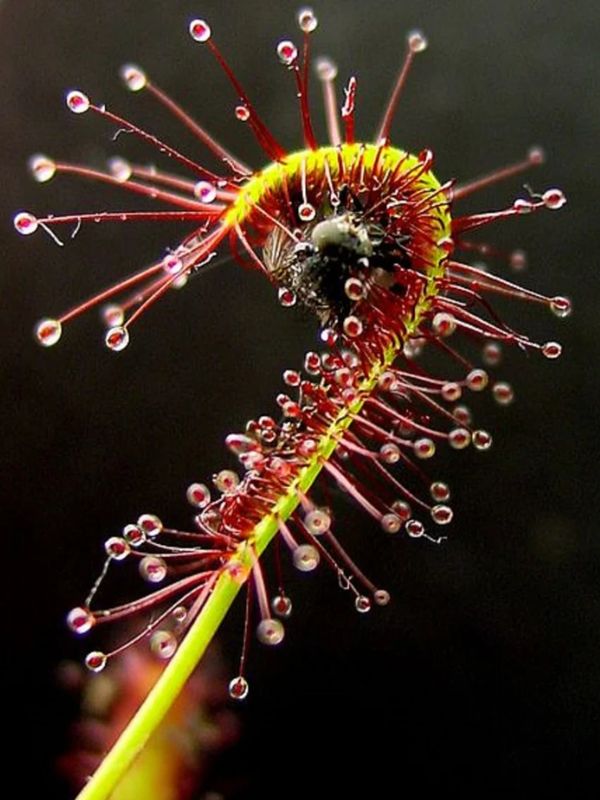
A Sundew plant ensnaring a fly
The Sundew plant is commonly found in wetlands, bogs, and other areas with high humidity levels. It’s also a popular choice for gardeners who want to add a touch of exotic beauty to their collections.
In addition to being a visually stunning plant, Drosera has also been used for medicinal purposes in some cultures. Its leaves contain compounds that have been shown to have anti-inflammatory and antimicrobial properties.
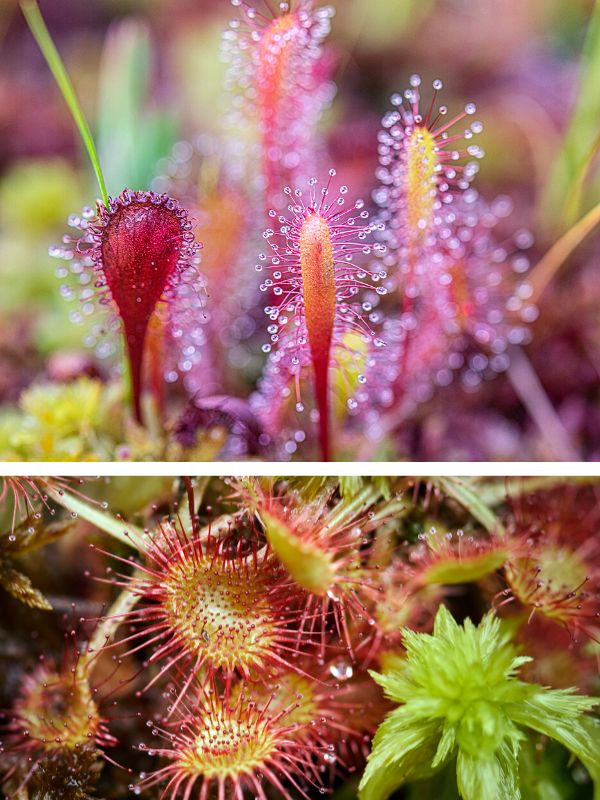
Cape Sundew plant (top) and a Paddle Leaf Sundew (bottom)
Nepenthes (Tropical Pitcher Plants)
Nepenthes, commonly known as the tropical pitcher plant, is a fascinating genus of carnivorous plants. These plants are mostly found in tropical regions, particularly in Southeast Asia, India, and Madagascar. The name “Nepenthes” is derived from the Greek word “nepenthe,” which means “without sorrow.”
One of the most distinctive features of Nepenthes is their pitcher-shaped leaves that are used to trap insects and other small prey. The pitchers are filled with a sticky digestive fluid that dissolves the prey and provides the plant with essential nutrients like nitrogen, phosphorus, and potassium.
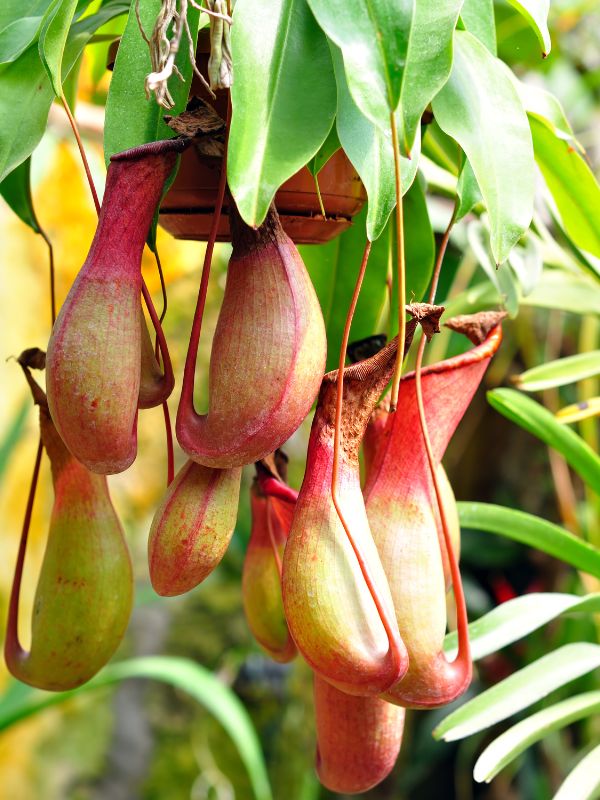
Nepenthes, the tropical pitcher plant
Nepenthes come in a variety of shapes and sizes, with some species producing pitchers that are as small as a few centimeters, while others can grow up to a meter in length. Some of the most popular species among collectors include Nepenthes rajah, Nepenthes ventricosa, and Nepenthes alata.
The World’s Largest Carnivorous Plant
The largest Nepenthes found are known to capture and digest lizards, frogs, small voles, birds and mice. Nepenthes Rajah is native to only two mountains in Borneo, Malaysia.
The pitcher traps can grow up to 16 inches (41cm) tall and 8 inches (20cm) wide. The pitchers have a holding capacity of up to one gallon of digestive fluid (3.5 liters).
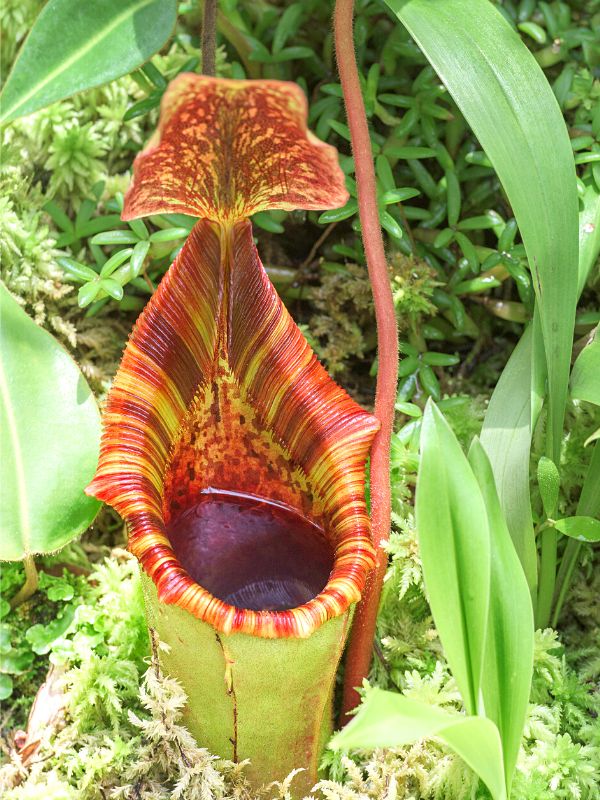
Nepenthes Rajah, the world’s largest pitcher plant
This plant will digest an entire mouse in about 2 weeks, even most of the bones. If a mammal does not fall into the trap, this Nepenthes is adapted to consume the droppings that fall into it from small animals that visit to collect the plant’s nectar that forms underneath the lid.
The Nepenthes Rajah is also known for its striking appearance, with a deep red coloration and intricate patterns on the pitchers. Due to its size and beauty, this plant has become a popular attraction for botanists and nature enthusiasts alike.
Butterwort: The African Violet Of Carnivorous Plants
Butterwort, also known as Pinguicula, is a genus of carnivorous plants that are native to temperate and arctic regions of the Northern Hemisphere. These plants are often considered the African Violet of carnivorous plants due to their small size and delicate flowers that come in shades of pink, purple, and white.
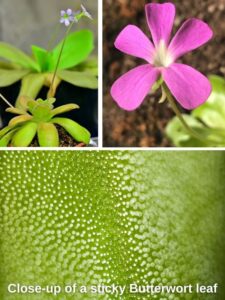
Despite their beautiful appearance, butterworts are ruthless predators. The leaves of these plants are covered in sticky mucilage that attracts and traps unsuspecting insects. Once an insect is stuck, the plant will wrap its leaves around it and secrete digestive enzymes that break down the insect’s body.
Bladderworts
Bladderworts are a type of carnivorous plant that can be found in aquatic environments such as ponds, swamps, and streams. They are known for their unique bladder-shaped traps that are used to capture and digest small aquatic creatures such as insects, crustaceans, and even small fish.
Bladderworts are characterized by their finely divided leaves and long, slender stems that can grow up to several feet long. They have small, delicate flowers that range in color from white to yellow and purple. Some species of bladderworts are even able to float on the surface of the water, while others are rooted in the soil at the bottom of the water.
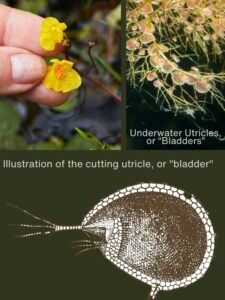
Despite their carnivorous nature, bladderworts are an important part of the aquatic food web. They provide habitat for a variety of aquatic creatures and help to filter the water, removing excess nutrients and pollutants.
Overall, bladderworts are fascinating and important plants that play a vital role in aquatic ecosystems.
Aldrovanda: The Floating Water Wheel Plant
Aldrovanda is a unique carnivorous plant that is commonly known as the floating water wheel plant. It is an aquatic plant that is found in freshwater habitats such as ponds, lakes, and slow-moving streams. The plant is named after the Italian naturalist, Ulisse Aldrovandi, who first discovered it in 1602.
What makes this plant unique is its ability to float on the water surface and capture small aquatic animals such as insects, crustaceans, and even small fish. The plant has a set of traps that are arranged in a whorl pattern around a central axis, resembling a water wheel.
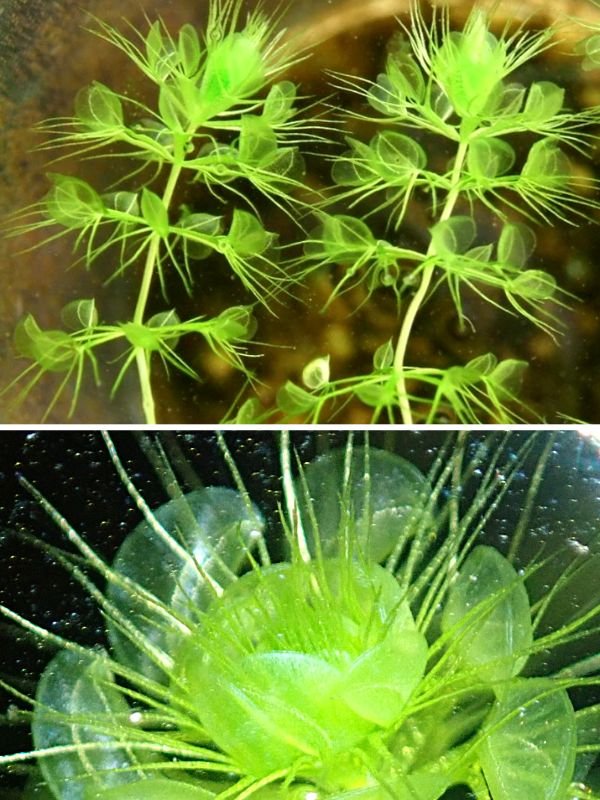
Top: The Water Wheel Plant. Bottom: Close-up view of the plant’s traps
The traps are triggered when an unsuspecting prey touches tiny hairs on their surface, causing the trap to snap shut in just a few milliseconds.
Despite its carnivorous nature, Aldrovanda is not harmful to humans and is even considered a delicacy in some parts of the world. In Japan, for example, the plant is known as the “water wheel vegetable” and is often used in traditional dishes.
The Cobra Lily
The Cobra Lily, also known as Darlingtonia Californica, is a rare and unusual carnivorous plant native to the bogs and wetlands of Northern California and Southern Oregon. It gets its name from the shape of its pitcher, which resembles a cobra with its hood spread open.
The plant uses its hood to attract insects, which are then lured into the pitcher by the sweet nectar produced by the plant. Once inside, the insects become trapped and are digested by the plant’s enzymes.
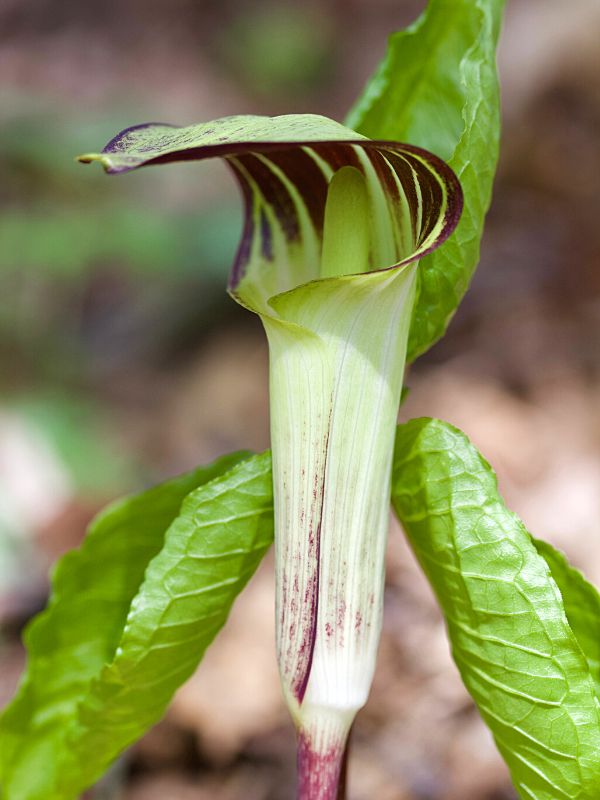
Cobra Lily, or Jack-in-the-Pulpit
The Cobra Lily is a fascinating plant that has evolved to thrive in environments where other plants struggle to survive. Its unique shape and carnivorous nature have made it a popular attraction for visitors to botanical gardens and nature reserves.
Other Carnivorous Plants
- Lady’s Slipper Orchid (Cypripedium).
- South African Fly Bush (Roridula).
- Carnivorous Bromeliad (Brocchinia reducta).
- Rainbow Plant (Byblis).
- Dewy Pine, Portuguese Sundew (Drosophyllum lusitanicum).
- African Liana (Triphyophyllum).
- Powdery Strap Air Plant (Catopsis berteroniana).
Where Can I Find Carnivorous Plants?
Where to start: Some home and garden centers sell the common varieties of pitcher plants and venus fly traps but it can be hit or miss trying to find them there. Consider buying online. Look for sellers that provide a money back guarantee.
I’ve found many carnivorous plant collections sold on major e-commerce websites such as Amazon, Ebay, and Etsy. Look for sellers that are based in the country you live in. International plant shipments can take longer and be delayed by customs inspections and you don’t want that.
If you’re interested in rare or hard-to-find carnivorous plants, you may want to look into joining a carnivorous plant society or group. These groups often have members who are knowledgeable about these unique plants and may be able to direct you to sellers or other resources.
In summary, you can buy carnivorous plants from local nurseries, online retailers, or carnivorous plant societies. No matter where you purchase them from, make sure to provide them with the proper care they need to thrive.
